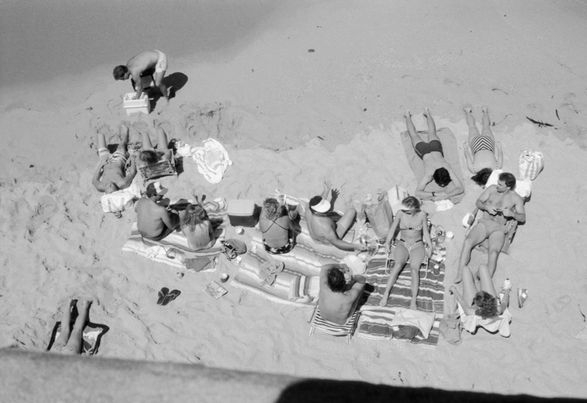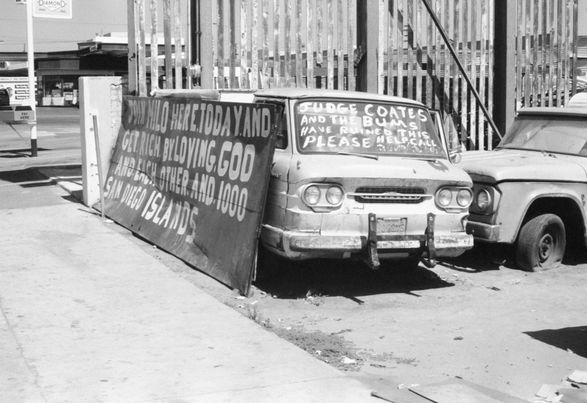Alien Resident
Opens -
Closes -
More Exhibition Content -
Exhibition Statement
When Stephen Clarke arrived on America’s West Coast in the mid-1980s, he had expected to feel a familiarity with its landscape. Like other British children of his generation growing up in the 1960s and ‘70s, he had absorbed a version of California by watching popular American detective shows. The backdrop to the weekly drama on Charlie’s Angels or Columbo was the bright, blue-skied Sunny State in close-up. Onto his childhood picture of California, Clarke had mapped the work of the photo-artists based there who now informed his practice: Ed Ruscha, John Baldessari, and Lewis Baltz.
Clarke took up residence in El Cajon, a suburb east of San Diego city. Through casual employment in the photographic industries he saw San Diego-as-stage-set to tourism and cinema. In San Diego’s ‘Old Town’, a site of historic importance that had gained the character of a theme park, he took photographs of visitors dressed up as cowboys and saloon girls. When he worked as a photo retoucher he was based in a studio in Miramar, the location for the film Top Gun (1986). As a minilab assistant, Clarke collected film and delivered prints to the Naval Bases on Coronado where the Hotel del Coronado had been the setting for the film Some Like it Hot (1959).
But this was not a familiar landscape nor was it a glamorous one; it was alien territory, seasonless and sprawling. Streets were wide; buildings and landmarks were spread out; everything that Clarke had imagined he would photograph seemed beyond reach, in the distance, across roads, parking lots, and scrubland. He needed to learn to navigate San Diego County in order to picture it.
Clarke’s approach to photographing the city and its environs was through simple exploration: he drove, parked up, and walked. On foot he was an oddity, a lone figure. In El Cajon, La Mesa, La Jolla, and over the border in Mexico’s neighbouring city, Tijuana, he focused initially on features that were recognizable in their function but extraordinary in their appearance, such as the American mailbox.
As the year progressed, Clarke met with San Diego-based photographers Philipp Scholz Rittermann and Phel Steinmetz. Both offered him support and guidance to enable his continued work and practice in the region. Scholz Rittermann generously gave him a range of contacts—including commercial photographers who would value his printing skills—and pointed him in the direction of Steinmetz. Steinmetz, who had grown up in El Cajon, introduced Clarke to his photographic work, shared his experience of San Diego, and encouraged him to apply for the MFA at the University of California, San Diego (UCSD), under his tutelage.
In the autumn of 1987, without sufficient funds and a working car, Clarke returned to England bringing with him more than one hundred rolls of film which he processed on his return. Dominated by signage and the automobile, the black-and-white 35mm images of peopleless sidewalks attest to a non-pedestrian culture. Until recently, this body of work remained as negatives and contact sheets.
In 2013/14, Clarke began publishing his work with the independent photobook publisher Craig Atkinson at Café Royal Books. In 2019, four titles were released of the San Diego photographs: Mailboxes San Diego 1986-1987; Typography San Diego 1986-1987; and San Diego Topographics 1986-1987 in two volumes. This exhibition, Alien Resident, brings together the photographs from the Café Royal Books with many previously unpublished works. It forms part of Clarke’s bigger project to revisit and review his archive of unexplored pictures.
Steve Clarke











































